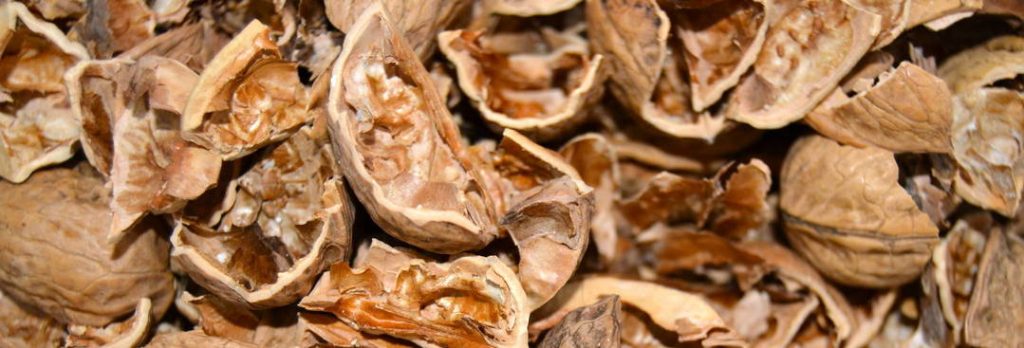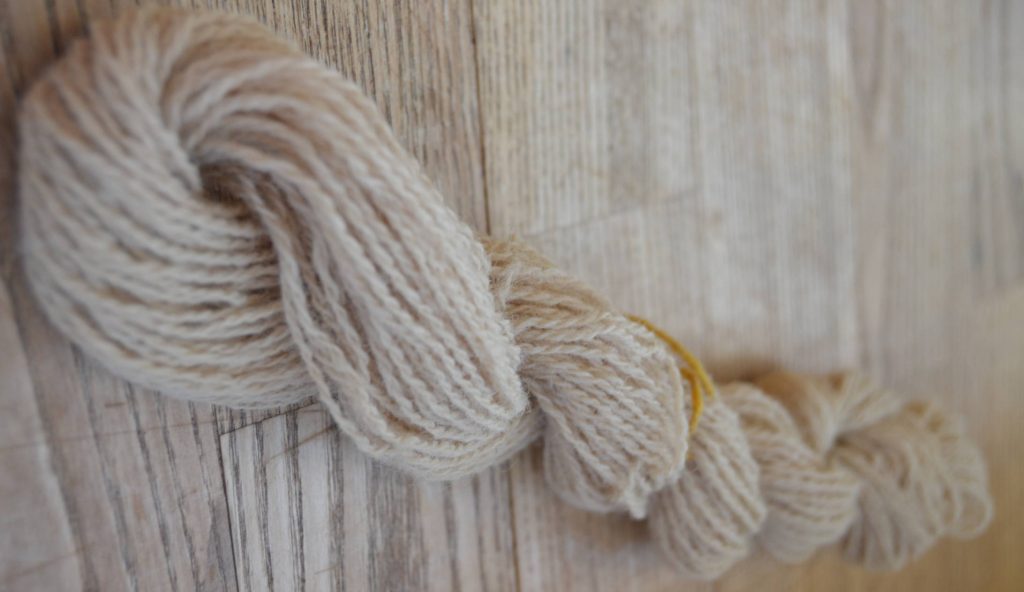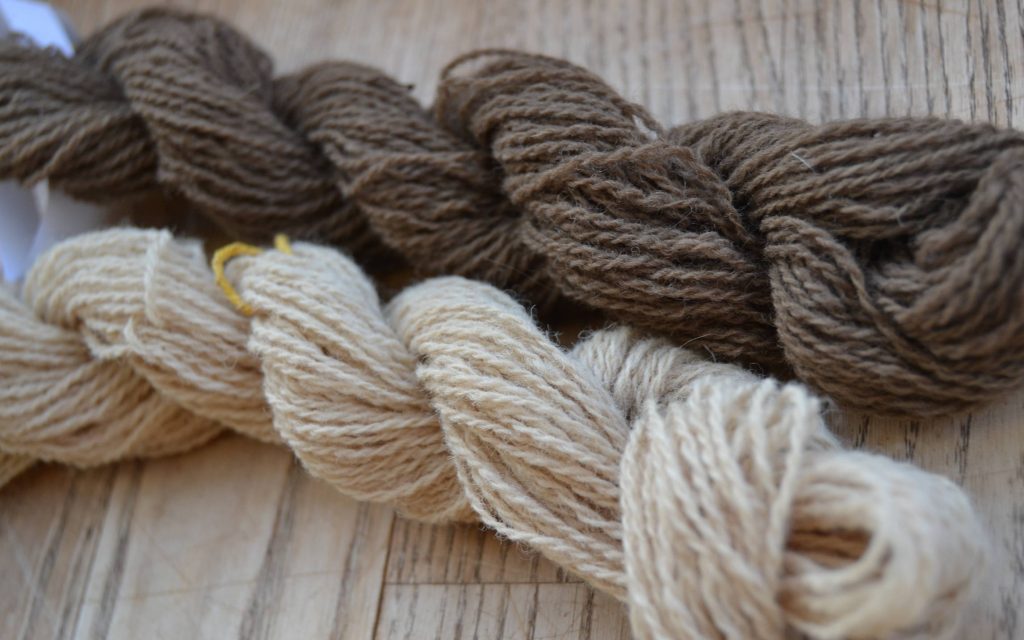I lived in Grenoble for 2 years, and everybody there is always talking about walnuts. The region is famous for its walnuts – noix de Grenoble. But I have to admit that I didn’t actually see any nuts growing, nor did I eat very many of them while I lived there…
So one day here in Denmark, when I saw a big bag of noix de Grenoble at the supermarket, I just had to buy it. The nuts are eaten a long time ago, but I remembered reading somewhere that the shells can be used for dyeing (in addition, of course to the well known dye found in walnut hulls, but that’s another story).
I like the idea of salvage dyes, the dyes you find in something you would have just thrown out. So here they are, about 500 g of walnut shells
Following information from this article, I soaked the shells in water a couple of days, then boiled them for two hours. The next day, I removed the shells and simmered a 10 g alun-mordanted test skein in the dye bath for about an hour. As usual with browns, it looked good while in the bath, but after drying, what I have is just another beige skein:

Useful for color knitting, but not very exciting by itself. I had hoped to obtain a deeper brown, but that is, in fact, a difficult color to obtain in natural dyeing.
FACTS – WALNUT SHELLS
Mordant 10% alun
Water Tap
Yarn Supersoft 575 m/100 g
Yarn:Dyestuff ratio 1:50
Conclusion A lousy dyestuff
Possible improvements I don’t see any – other than forgetting about the walnut shell and befriending someone with a walnut tree, so I can get my hands on the hulls
Last year, I did get good browns from mushrooms. Here is my fresh weakly beige walnut skein next to a very nice brown from last year:

The brown skein is dyed with a mushroom that is quite abundant around here. I’ve typed it as Ischnoderma benzoinum (gran-tjæreporesvamp) with the help of my Swedish book “Färgsvampar & svampfärgning” by Hjördis Lundmark and Hans Marklund, but it could also be its relative Ischnoderma resinosum (fall polypore, tjæreporesvamp in Danish) . I don’t have a picture of the mushrooms I used, but I’ll look for it again next fall.
Jeg har afprøvet farvning med valnøddeskaller, men det giver kun en svag beige farve. For at få en god brun fra valnødder, så skal man altså have fat på den grønne del der sidder udenpå selve nødden. Jeg har desværre ikke noget valnøddetræ, men sidste år fik jeg en god brun farve med tjæreporesvamp.
Hi…Julie Nutt here…I am reading your site on natural dying and looking at all of your beautiful colors and PROJECTS!!! I am so impressed…The way you have used your dye samples is great…I wish I had thought of it!! I mixed a lot of my natural dyes into one yarn and although it is pretty…it wasn’t what I wanted to show off the individual colors!! I have plenty of Black Walnut trees around me ….I get some beautiful colors from the hulls, leaves, stems and bark…many gradients of browns. I have some that have dried in a bag from a year ago…and because of they drying they are light weight….I was wondering would you like me to break it all down into powder and send to you? I would keep the leaves, stems and hulls all separate from each other. I would be happy to do it for it is nice to find a kindred spirit in the natural dye world. I have never used the dried product from my black walnut trees (Juglans nigra)so I am not sure what kind of color you would get but you could give it a try…I take pictures of all of my dye experiments. I like you grab what I see on walks and bring it home to give it a try to see what color I get…even if it is not in anyone’s dye book or experience…I am always learning something new…I will do what you have done with the colors…keep them separate, spin them and knit them separately…Your blanket and hat are great idea’s and beautiful work…
Hi Julie,
Thank you so much for your kind words! I have to admit that I did actually spend a lot of time (my family thinks too much!) thinking about the best way to knit up my yarn samples. I also searched around a lot for patterns, but didn’t find anything that would show each separate color in a recognizable way. With ordinary yarn, that doesn’t matter, but with naturally dyed yarn I do think it’s half of the joy to recognize the exact yarn in a project. And then you remember the plant, the exact weather and spot where you picked it, who went on the trip, what you talked about…
I would absolutely LOVE to try your black walnut! I’m quite sure that it doesn’t grow here, and even ordinary walnut (which I think does not give as deep a brown color) is rare! Walnuts only hit the shops here around Christmas time, and they are all from Grenoble. It’s actually on my long term wish list to grow both kinds (but if I am to make any progress with that wish list, I think I’ll need quite a lot of land)